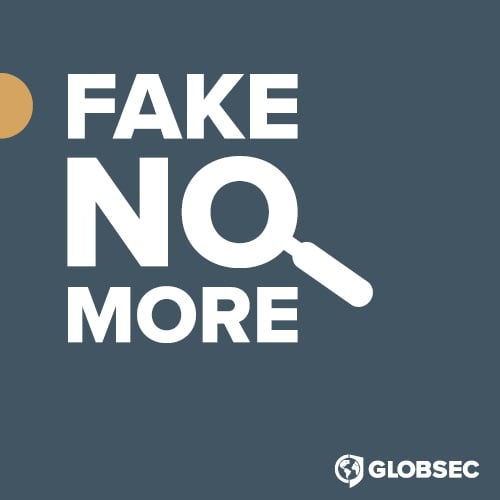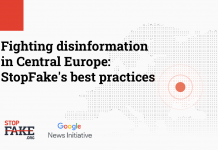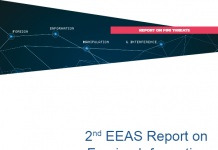
On November 25 2018 Russian naval forces rammed, fired shots at and then seized Ukrainian vessels and their crews after they purportedly entered Russia’s twelve-mile territorial zone within the Kerch Strait. The incident heightened tensions between the Russian Federation and Ukraine following Moscow’s unlawful annexation of Crimea in 2014. It also highlighted the tense legal status of the Strait and Azov Sea, as well as Russia’s expansionist tendencies.
The status of the Azov Sea and the Kerch Strait is regulated by a bilateral treaty signed by both parties in 2003. According to the terms of the treaty, the sea is considered to be internal waters for both countries, with Russian and Ukrainian commercial and military vessels also enjoying free passage through the Strait. According to the Russian Federation, the Ukrainian ships violated its territorial waters, a point underlined by video confessions from captured Ukrainian sailors. That said, Russia also violated international principles established by the UN Convention on the Law of the Sea which should have ensured unhindered and free passage through the Kerch Strait and Azov Sea.
While the incident received worldwide media attention, narratives and presented motives differed depending on whether outlets sided with Kiev or the Kremlin. How did disinformation and pro-Kremlin outlets in Central Europe report the Kerch Strait incident?[1] The following chart indicates that the number of articles covering Ukraine shot up on the day of the incident and stayed at a high level until early December.
Chart 1: Number of articles published in the Czech Republic and Slovakia with the term “Kerch” between 22 November – 14 December 2018
 (source: >versus<)[2]
(source: >versus<)[2]
The Kerch Strait incident also received extensive coverage on disinformation and pro-Kremlin outlets. In the Czech Republic, for example, disinformation outlets published 258 articles about the incident and its possible consequences between 25th November and 2nd December 2018, with the largest volume (147) occurring November 25-28. The most active disinformation platforms were Eurozprávy (Euronews) with 70 articles, the Czech version of Sputnik (64), Parlamentní listy (Parliamentary letters 41), AC24 (31) and Nová republika (25).
In Slovakia, 152 online articles were produced by mainstream media and disinformation websites within the analysed timeframe, with most occurring on November 26th 2018.[3] Out of this, 20 were published by Parlamentné listy (Parliamentary letters), 15 by Hlavné správy (Main news) and 12 by Infovojna (Infowar), Slovak websites known to spread disinformation and pro-Kremlin narratives. Similarly, as in the Czech Republic, the number of the articles published by disinformation outlets on this topic was bigger than those coming from mainstream media.
Chart 2: Number of online articles produced in Slovakia containing term the “Kerch” on November 26, 2018
(red color – disinformation outlets, grey color – outlets’ validity is evaluated, blue color – mainstream websites)
As it is possible to observe from the above chart, on 26th November 2018 Infovojna (Infowar) and ’former’[4] disinformation portal Parlamentné listy (Parliamentary letters) published 9 articles in comparison to only 5 by the mainstream investigation portal Aktuality.sk. 24hod (24hours) is an online portal that generates content predominantly from Slovak news agencies. The nature of Dennikpolitika is being evaluated due to controversial articles written in the past and therefore receives a grey label. Hlavné správy (Main news) is the most influential disinformation outlet disseminating pro-Kremlin narratives in Slovakia and published 6 articles with the term “Kerch” on November 26. Thus, this data suggests the greater importance of this topic for Czech and Slovak disinformation websites with a tendency to voice pro-Kremlin narratives.
A similar pattern was observed in Hungary, where the most active websites were the far-right and conspiratorial Vilaghelyzete.com, HUN-News and Balrad.ru. The incident was also featured prominently on the Facebook pages of Hungarian speaking separatists, for example Kiállunk Novorosszija mellett (Support Donbass from Hungary), Kiállunk Oroszország mellett (Support Vladimir Putin from Hungary) and Kiállunk Belarusz mellett (Support Lukashenko from Hungary). However, as indicated in the chart below, pro-Kremlin narratives disseminated in connection to Ukraine and the Kerch Strait incident was driven more by far-right Hungarian Facebook pages. These received greater traction and audience interaction than the Hungarian separatist Facebook accounts.
Chart 3: Hungarian pro-Kremlin Facebook pages’ audience reactions to the Kerch Strait incident between November 25 and December 2, 2018 (% of specific audiences)
 (source: Zoomsphere)
(source: Zoomsphere)
Siding with the Kremlin
Pro-Kremlin disinformation outlets in the Czech Republic, Hungary and Slovakia supported Kremlin information operations by spreading narratives aimed at destabilising Ukraine and regional security. In doing so, they relied significantly on quotes from Russian representatives and accessed websites like Russia Today (RT) and Iarex as sources of information. For its part, Russia used the Czech version of its Sputnik international news agency network to conduct information operations inside the region. The news service is now the second most read disinformation website in the Czech Republic and Slovakia.
Disinformation outlets such as Vlastenecké noviny, Infowar and Hlavné správy (Main news) argued that Ukraine was responsible for the Kerch Strait incident claiming that Ukrainian vessels entered Russian waters in order to provoke a conflict. In Hungary, this narrative was prominent on three separatist and revisionist Facebook pages – Hungarian-Serbian Brotherhood, Support Donbass from Hungary and Support Vladimir Putin from Hungary.
Another narrative disseminated by pro-Kremlin outlets claimed that Ukrainian vessels wanted to destroy the Crimean Bridge connecting southern Russia to the Crimean Peninsula. Czech, Hungarian and Slovak pro-Kremlin outlets also disseminated claims made by RT that the incident was orchestrated by Petro Poroshenko. According to this line of thinking, the Ukrainian president used the standoff to strengthen his domestic political position for the presidential elections in March 2019 and complicate the meeting between Donald Trump and Vladimir Putin during the upcoming G20 summit. In Hungary, the Bolshevik-nationalist Balrad.ru and pro-Kremlin Orosz Hírek (Russian News) warned of the reckless “political gamble” President Poroshenko was playing in order to secure his position and power before presidential elections. The Czech disinformation outlet Zvedavec went even further and adopted an insulting pro-Kremlin narrative branding Ukrainians Nazis.
Slovakia’s most influential pro-Kremlin disinformation outlet, Hlavné správy (Main news), called the captured Ukrainian soldiers a “sacral sacrifice” and accused them of undertaking a mission on behalf of American and Ukrainian elites. This idea feeds into the narrative of Hungarian conspiracy websites claiming that the incident was a “secret plot” by the United States to fuel Russophobia around the world, a tactic that was used before the wars in Iraq and Afghanistan.
Central European countries provide an excellent battlefield for Russian information operations. According to public opinion polls conducted by GLOBSEC, Central Europeans are undecided as to whether Russia tried to influence the outcomes of elections in several EU countries. In addition, 30% of respondents in V4 countries disagree that the conflict in Ukraine persists because of the presence of Russian forces. These perceptions, in turn, suggest that so long as Russia has a captive audience for its narratives it will have opportunities to expand its sphere of influence. The spreading of doubt is an important element of Moscow’s hybrid activities, and not just in the Central European region.
By Katarína Klingová, GLOBSEC Policy Institute; Lóránt Györi, Political Capital Institute; Jonáš Syrovátka, Prague Security Studies Institute, for GLOBSEC
This brief was published in the framework of project run by the GLOBSEC Policy Institute and supported by the National Endowment for Democracy.
© GLOBSEC Policy Institute
The opinions stated in this report do not necessarily represent the position or views of the GLOBSEC Policy Institute or the National Endowment for Democracy. Responsibility for the information and views expressed therein lies entirely with the authors.




[1] Data analyzed in this analytical brief were collected from November 25- December 2, 2018 using online tool Zoomsphere.
[2] ICT media-monitoring tool >versus< was used for data collection. The chart provides data for the articles produced within the time period from 22 November – 14 December 2018 in the Czech Republic and Slovakia. Hungarian database is being revised, thus Hungarian data were not included. The media-monitoring >versus< was developed by the International Republican Institute within its Beacon Project and it encompasses database of mainstream media and disinformation sources, Facebook pages, Twitter accounts and online discussions. For the purpose of this analysis, only the news section of the database was used.
[3] For the list of Czech and Slovak websites ranked as disinformative – providing dubious, deceptive, fraudulent, conspiratorial and questionable propaganda-based content – please visit konspiratori.sk.
[4] Parliamentary letters used to be ranked as disinformative and spreading dubious content by konspiratori.sk. However, since the website had deleted its problematic content, it was removed from the list. Due to its history of spreading disinformation and hoaxes, it received a grey label.




